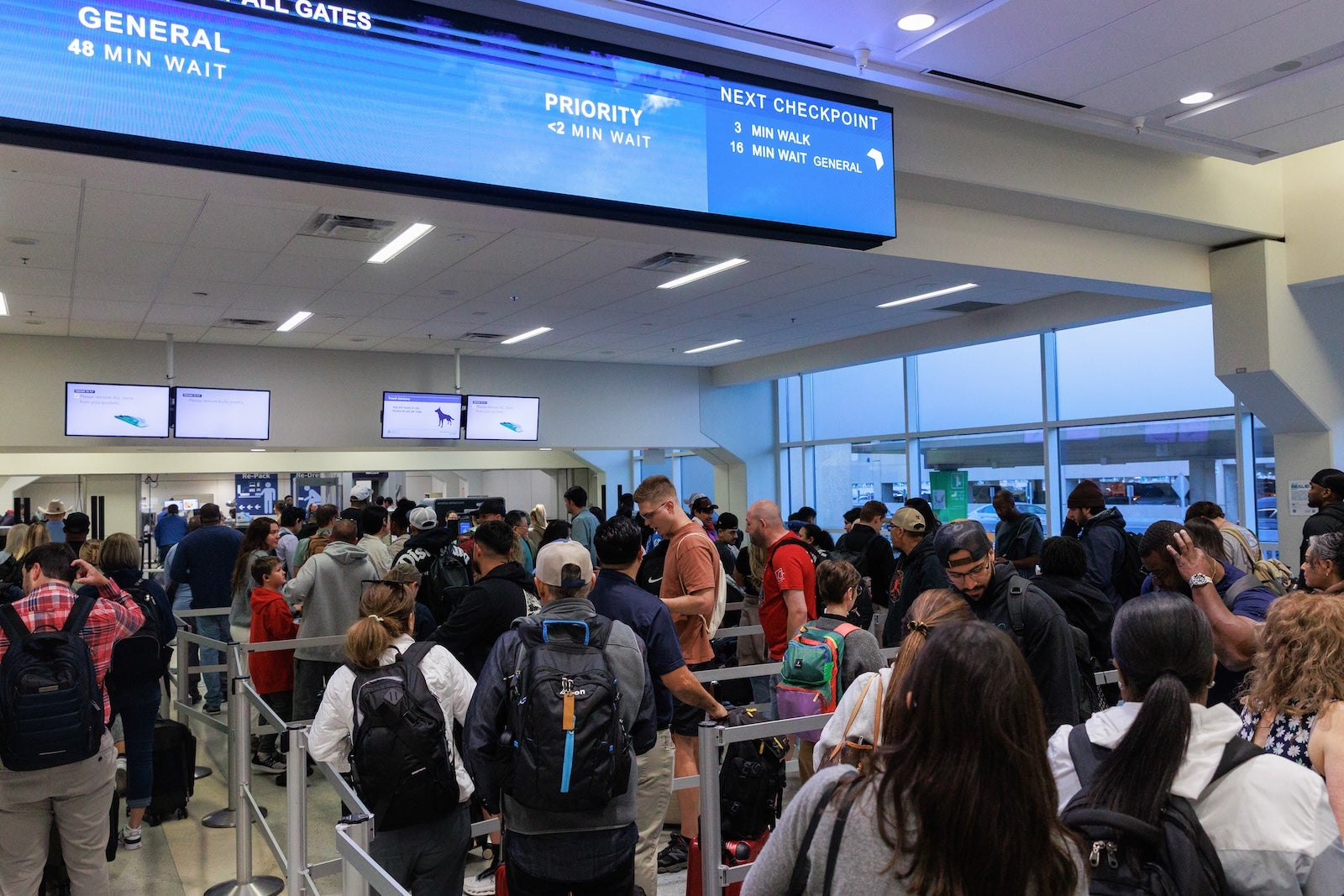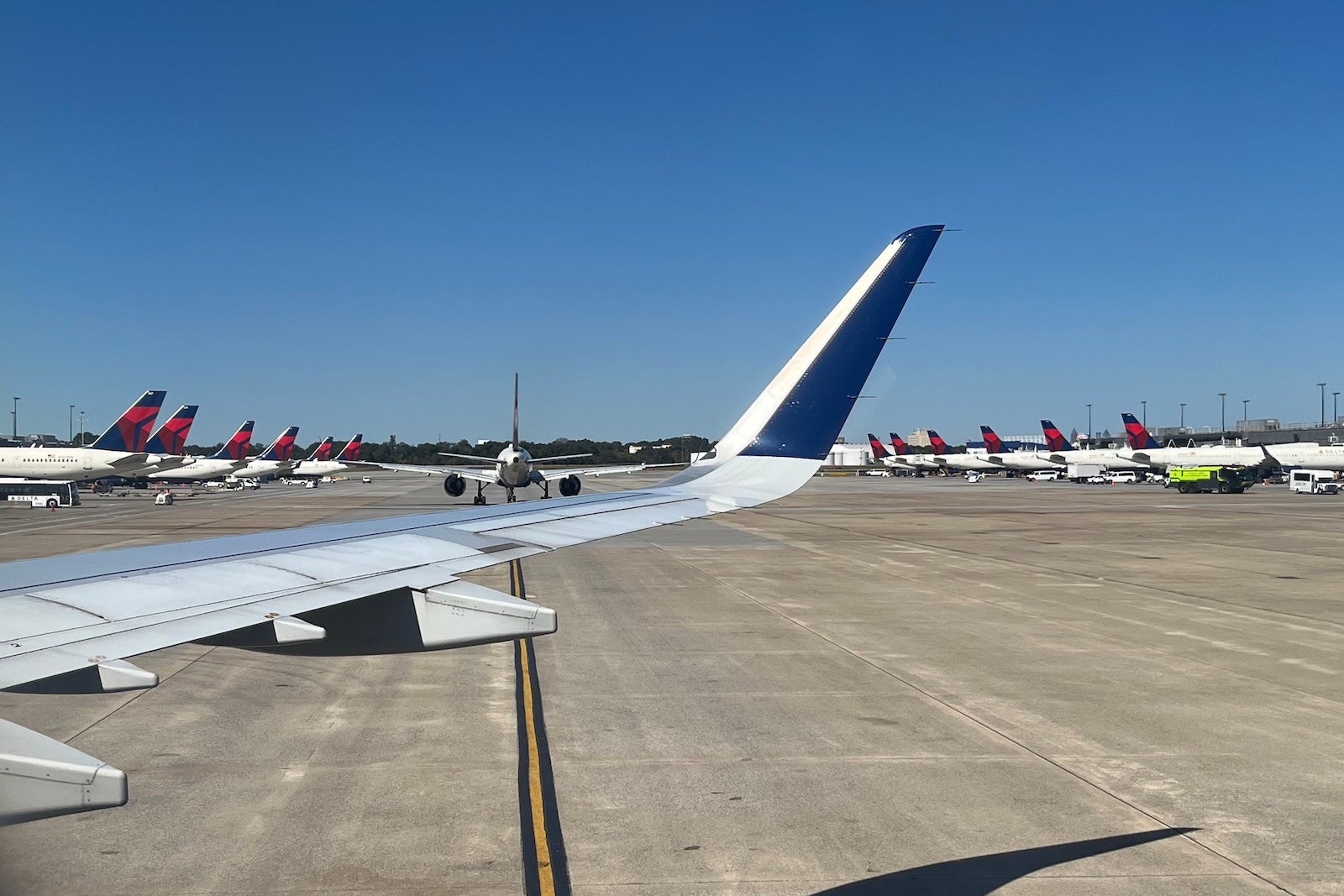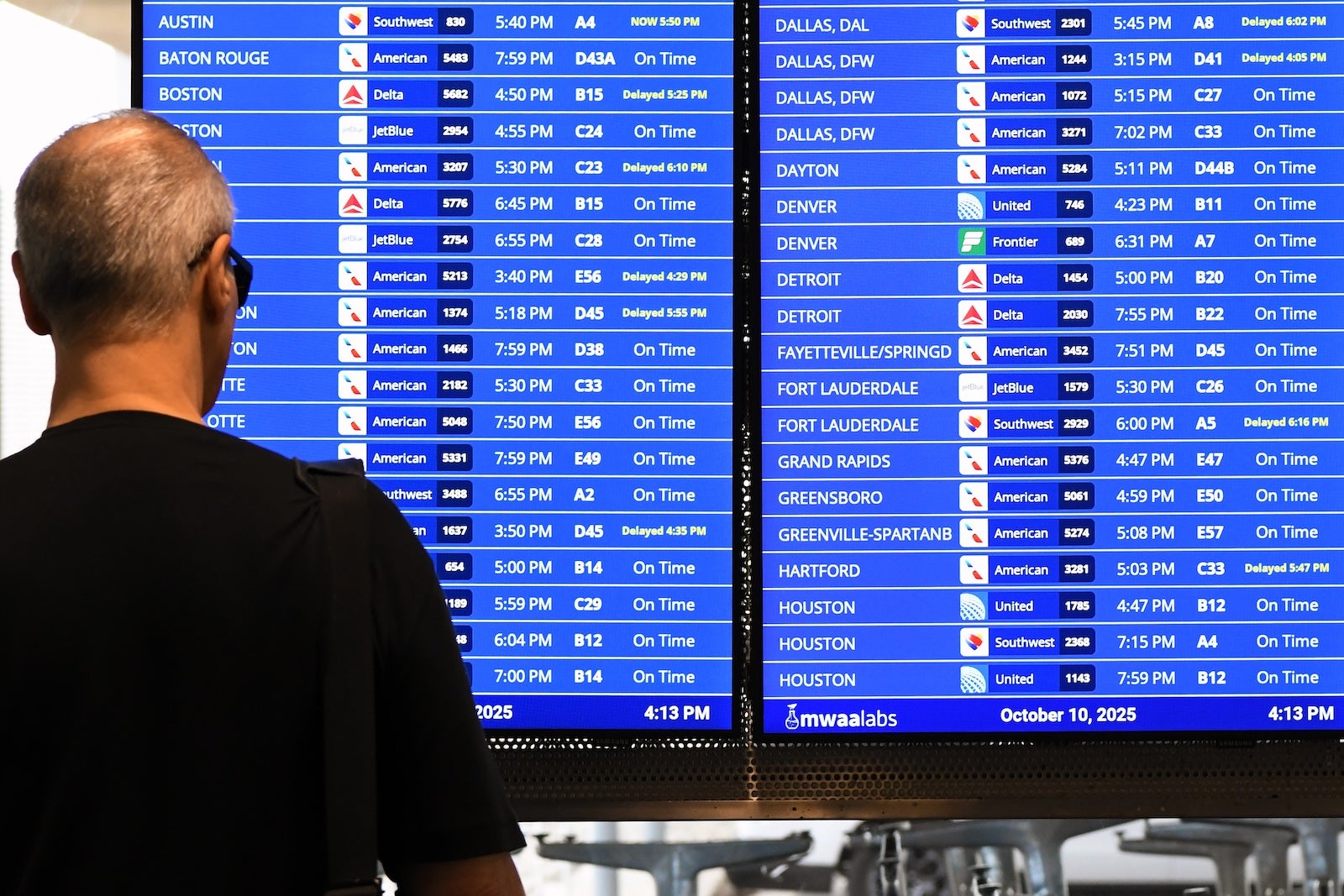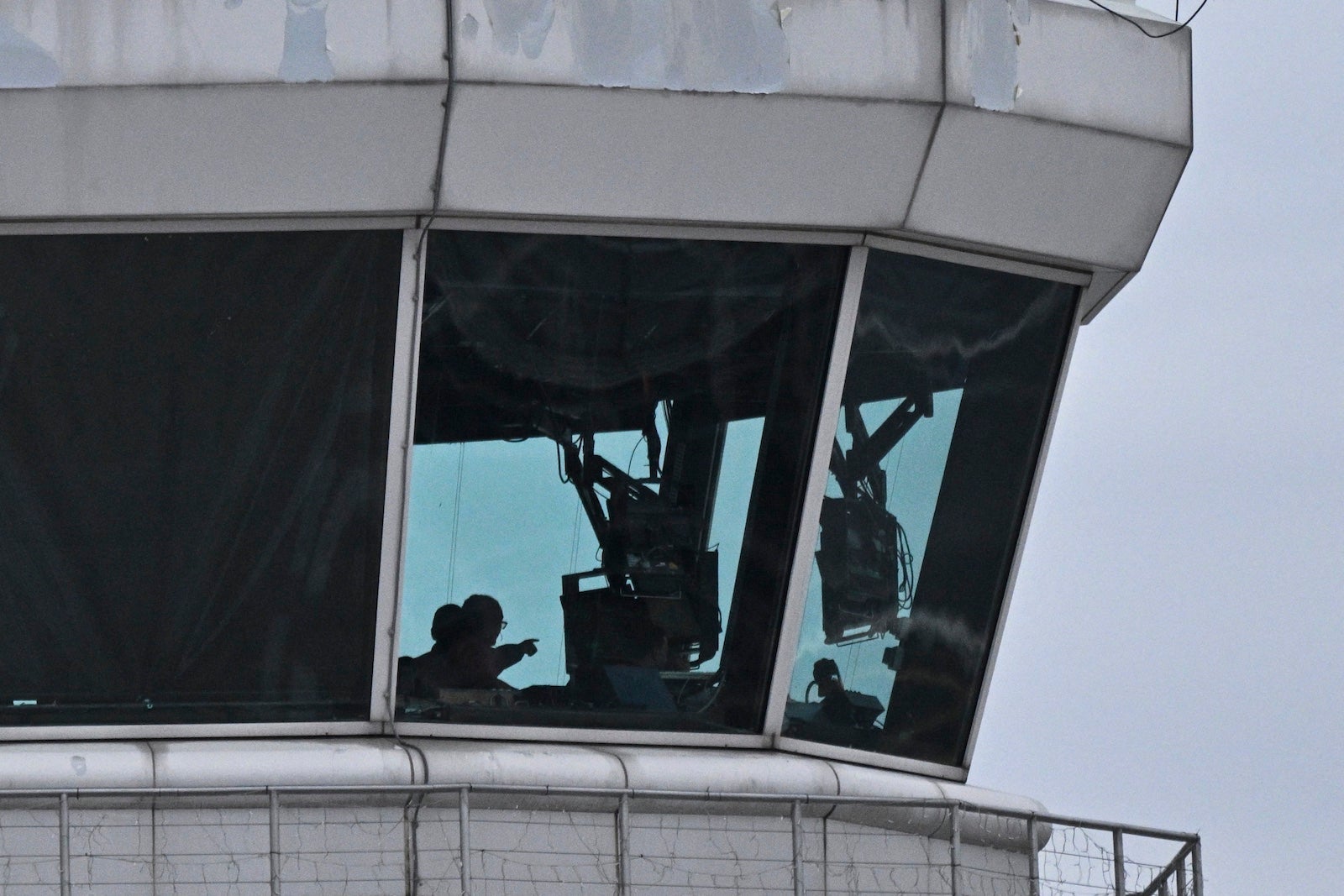Shutdowns, storms put pressure on airports: TPG’s current flying tips

It’s been nearly a month since the partial federal government shutdown forced critical air traffic controllers and Transportation Security Administration officials to work without pay.
While October’s flight delays didn’t reach the level of mass disruption, bad weather and growing frustration among unpaid workers could lead to serious travel problems in the coming weeks.
In the New York City area, delays were experienced at the region’s three largest airports Thursday as a storm system barreled into the Northeast, stressing already understaffed air traffic control facilities.
The Federal Aviation Administration issued weather-related groundings for flights at John F. Kennedy International Airport (JFK), LaGuardia Airport (LGA) and Newark Liberty International Airport (EWR) on Thursday afternoon, with average delays at the region’s major hubs exceeding three hours.
Meanwhile, U.S. Transportation Secretary Sean Duffy said this week that 44% of all flight delays on Sunday (up from 24% on Monday) were caused by FAA staff shortages (up from the 5% average in 2025).
Air traffic control staffing faces flight delays challenges
Flight delays had been a major issue when the shutdown began on Oct. 1. Lawmakers and aviation industry leaders worry that weeks without pay could lead to a surge in sick-leave employees at the FAA and TSA — an issue that plagued air travel during the last government shutdown in 2019.
Duffy said at a news conference this week that for much of October, disruptions were more “day to day” and “location to location” — occasionally causing the FAA to halt or slow departures at major airports.
Related: US government shutdown: Here are the travel impacts
These include severe staffing shortages at Los Angeles International Airport (LAX) on Sunday.

Reward your inbox with the TPG daily newsletter
Join over 700,000 readers and get breaking news, in-depth guides and exclusive offers from TPG experts
The nation’s top air traffic controllers union has warned that disruptions are unlikely to improve until the government reopens.
“The problems are growing every day,” Nick Daniels, president of the National Air Traffic Controllers Association, said Tuesday, the same day controllers missed their first full paycheck.
When air traffic control facilities are short-staffed, the FAA slows the flow of aircraft for safety reasons.
What about TSA checkpoints?
Like air traffic controllers, TSA officers work without pay.
The agency told TPG on Thursday that checkpoints nationwide have been “minimal” affected so far.
However, a spokesman said “occasional delays at some security checkpoints are to be expected”. “The longer the shutdown lasts, the more severe the impact will be on our TSA employees.”

In addition to providing meals to essential aviation workers, airlines have also made changes to help travelers move through the airport more smoothly.
Delta said its employees are assisting with TSA checkpoint logistics to free up certified TSA screeners to process passengers.
The airline also noted that its employees are assisting passengers through the concourses of its large hub at Hartsfield-Jackson Atlanta International Airport (ATL).

Delta Air Lines closes special business class security entrance
Some Delta passengers will notice a big change: The airline is temporarily closing semi-private security checkpoints for Delta passengers at JFK and LAX due to Transportation Security Administration (TSA) staffing issues.
Travel tips during government shutdown
With no clear indication of when the government shutdown will end, here are some flying tips — whether you’re traveling this week or booking a flight for the holidays.
Consider arriving at the airport early
The TSA continues to recommend that travelers arrive at the airport at least 2 to 2 1/2 hours before their flight. This is broadly in line with its normal guidance.
My advice: Just get there a little earlier than usual. It might take 20 or 30 minutes longer than your normal airport trip—whether you use the standard lanes or have a TSA Pre-Check lane, and whether you’re a “three-hour early” traveler or someone who prefers to shorten your trip.
It’s official: Travelers no longer have to take off shoes at TSA checkpoints

If possible, book a direct flight or a longer connecting flight
If you are booking a trip in the next few weeks, I would choose a direct flight if possible.
Flight cancellations in October were very low, accounting for just 0.3% of all US airline flights, according to FlightAware. This is better than what we saw in September when the government opened up.
However, delays remain a very real problem.
If you can’t fly direct, I would avoid a stressful 40 minute layover if possible. After all, it becomes a bigger problem if a 45-minute delay causes you to miss your connecting flight.
Be prepared to wait longer on the plane
Load up your iPad with more shows, download extra podcasts and bring a bottle of water. The biggest impact on customers from air traffic control-related delays may be longer taxi times or longer wait times before landing.

Pack the necessary supplies, entertainment, battery life and refreshments so you’re ready when a two-hour flight turns into 3 1/2 hours on the plane.
Keep an eye on airline apps
If the airline offers you extra flexibility, keep an eye out for opportunities to switch to a new itinerary or take advantage of travel advisories. If something goes wrong, you can make all the necessary changes with just a few clicks in its mobile app.
Learn more: Flying Cancellation or delay? This is what to do next
Book with a credit card with travel insurance
If you’re stuck due to a government shutdown, airlines are unlikely to cover the costs.
This means if you delay staying overnight, you could be stuck with an unexpected hotel night or dinner out.
This is where a travel credit card with travel insurance protection can come in handy, helping you get reimbursed for the cost of unplanned travel delays – something you’ll want to consider if you’re booking a holiday trip.
Looking to the future
These growing air travel and shutdown concerns come less than four weeks before the Thanksgiving travel rush begins.
Keep in mind that the Sunday after Thanksgiving is typically one of the busiest travel days of the year.
As of Thursday, the U.S. Travel Association reported that the government shutdown had cost the U.S. travel industry at least $4.1 billion in lost revenue.
Related reading:



